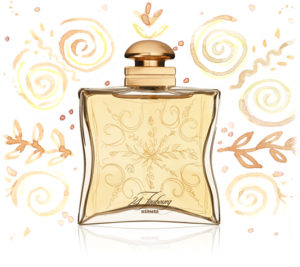The New York Times article “Next Step for Labels: Cyberboutiques” highlights the forays luxury brands are making into out-cooling each other online. Luxury brands such as the new http://www.zegnainstore.com/, which can’t decide whether it’s a really slow video game or a shopping experience, are relying on ‘a wow factor’ of website production value to establish luxe on line. But as Imran Amed, the founder of Businessoffashion.com, points out, the utility of ecommerce is at odds with the experience of luxury. Part of the problem is that the web is nothing if not an all-access pass to anything and everything — so if Luxury isn’t defined by exclusivity, what is it?
In an irresistible piece called “The specificity of luxury management: Turning marketing upside down,” the authors, Jean-Noel Kapferer and Vincent Bastein argue that luxury brand marketing is about vision and true artistic merit, which places luxury products “above the customer.” Like art, the Luxury Good is meant to be bold, creative, astonishing, humbling. It’s not about price; it must embody a streak of authentic artistry. It must be, they imply, deserved.
With the exception of the incredible Alexander McQueen, whose posthumous Met Museum exhibit Savage Beauty left me in tears, I have to wonder where this artistry has gone. As someone who was young enough to have to beg mom to buy my first Calvin Klein jeans – a pop fashion moment that simultaneously raised the mundane and lowered the lofty – I’m part of a generation that bore witness to a luxury shift, and its name is lucre. Once Calvin and his fellow designers saw the money to be made from the masses, fashion launched into label-land,now reached by interstate from an exit to a ‘discount upscale mall.’ What these ‘affordable luxury’ meccas sell is a simulacrum of the lifestyle of true wealth; can’t afford a Gucci suit? Buy the fragrance.
Now “luxury” is less a statement of perfection and elegance and more of a game, the grid of Greater Taylorism writ large, wherein a company supports its “stars” (the Hermes Birkin bag) with its cash-cows (24 Faubourg, eau de parfum). For a luxury brand, which trades cache for cashflow, it’s a tricky, and continually shifting, balance.
 Fragrance as an example
Fragrance as an example
Having spent a couple of decades marketing both prestige, mass, and ‘masstige’ products in the beauty category, Kapferer’s thesis that artistic vision is essential, plays out. Many misguided would-be moguls have come knocking, visions of a 60% mark-up dancing in their heads. Every single one of them has failed for the same reason. They want to launch prestige at mass. But the strategies are fundamentally different. To launch a successful mass fragrance, you have to work backward from the point of distribution, designing for the price point and the shelf space. The weight of the box, whether it has a liner, whether the liner is printed, the finish of the paper, the fit of the cap the custom vs. of-the-shelf bottle – are decisions that are made well in advance of a sales call to a retailer. These calculations are based on a buyer’s whims, and the results for small players can be disastrous. Licensed names (which are nothing if not borrowed luxury) lose their luster, and production costs quickly outstrip price points – and suddenly they’re holding an overproduced package headed for the grey market, the final resting place of failed attempts.
Prestige, on the other hand, requires passion, and a willingness to place perfection over profit. Luxury goods require nurturing – from their production to their presentation to the final package – that isn’t about preciousness, and certainly isn’t about profit margin, but about getting it right. A passionate luxury marketer – be it the company or the star du jour — is going to push for the most exquisite, unusual, creative, ground-breaking, visionary bottle, package, campaign, etc. etc. etc. Fragrance is an olfactive snapshot of the zeitgeist, and great ones, visionary ones, capture the sense of their times. Calvin Klein’s run starting with Obsession, and its stalker mentality, right through Eternity and One, each captured a collective cultural moment. That takes creative intuition, and profit plowed back into brand building. Luxury producers are driven by the beautiful vision, costs be damned, and will invest over the long term to achieve it.
Online that personal vision translates as editorial expertise — the kind of “Why Don’t You?” confidence of a Vreeland. And baby, you either got it or your don’t.
Update: Also read our article “The Face of Social Commerce” and review the study (PDF download), you will find some great insights.
